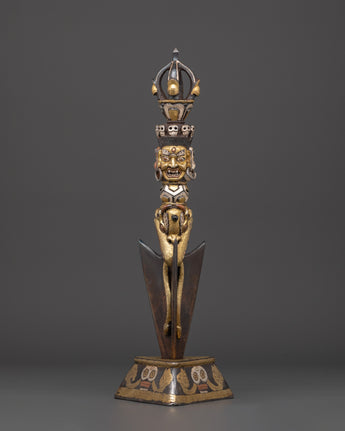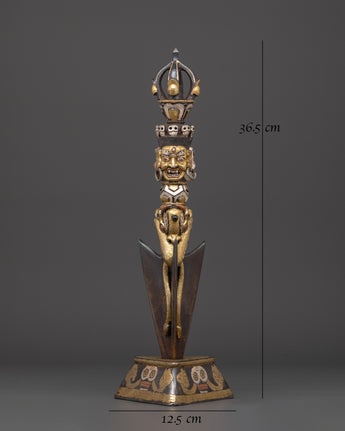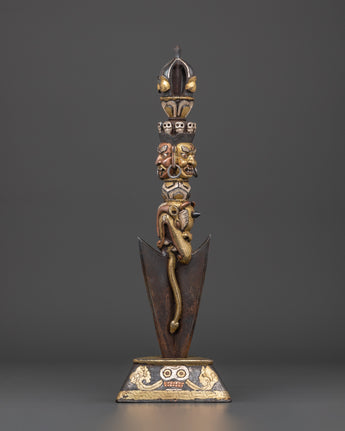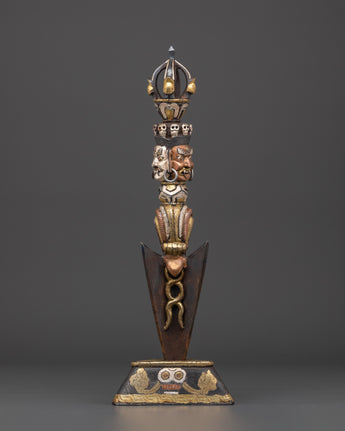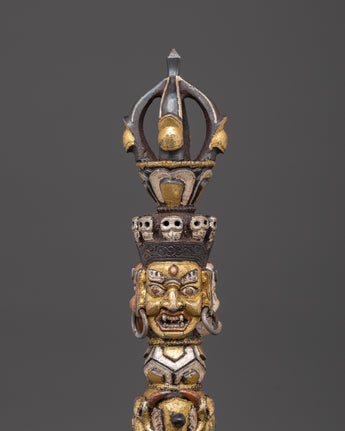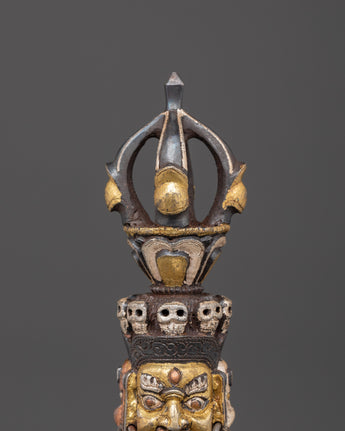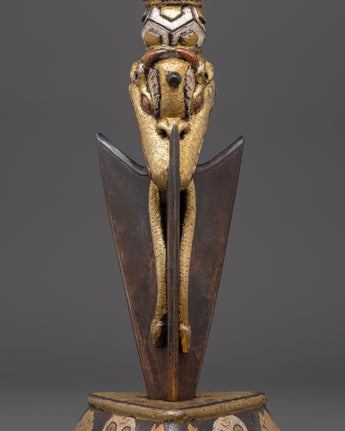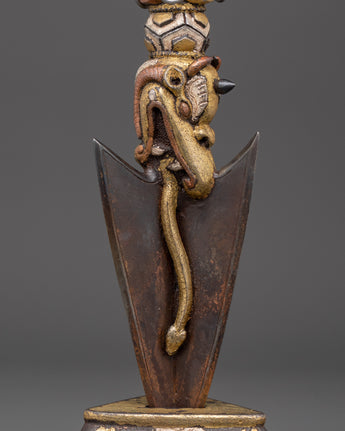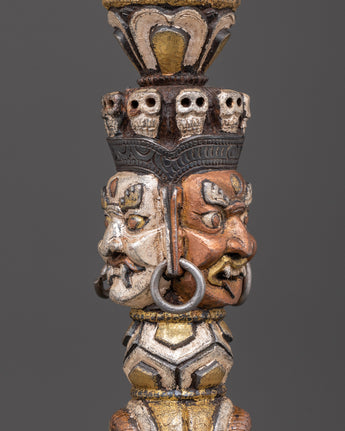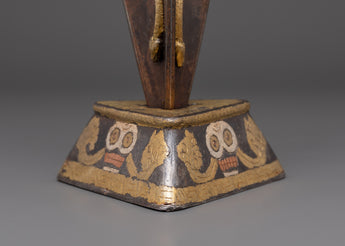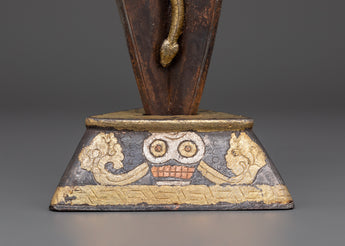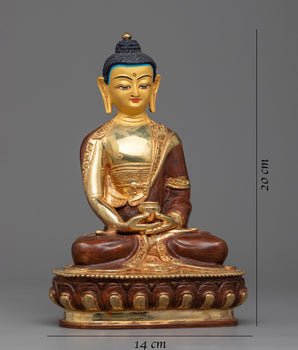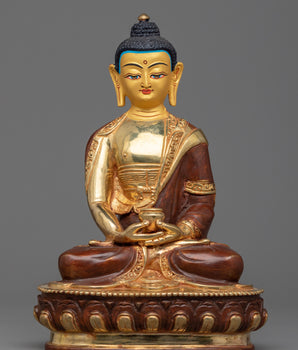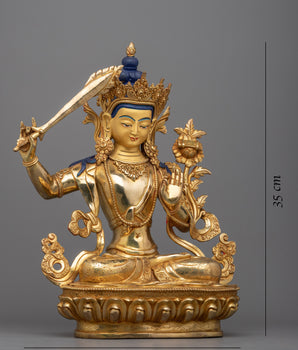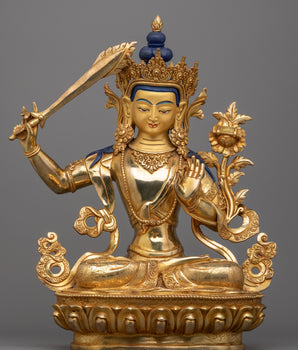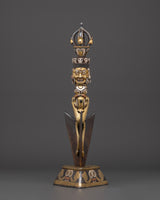
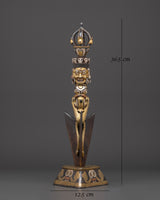
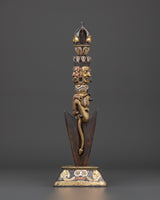
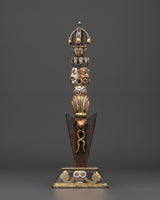
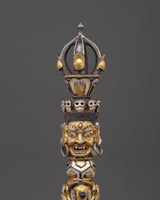
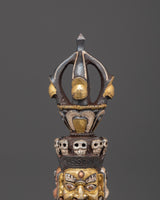
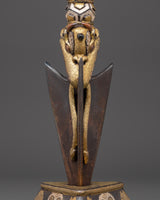
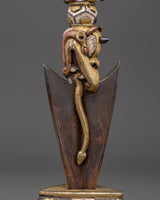
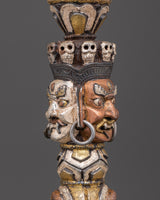
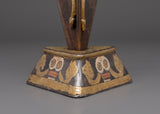
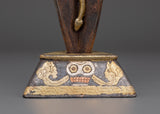
Phurba Meditation Tool | Spiritual Practices

100% AUTHENTIC

HANDMADE

FREE SHIPPING
Phurba Meditation Tool | A Sacred Ritual Dagger f
--------------------------------------------
Size: 36.5cm (Height) x 12.5cm (Width)
Weight: 2.15kg
Materials: Iron, Brass, Silver Inlaid
--------------------------------------------
About The Ritual Item :
The Phurba Meditation Tool holds great significance in Tibetan Buddhism and Himalayan spiritual traditions. Measuring 36.5cm in height and 12.5cm in width, and weighing 2.15kg, it is carefully handcrafted from iron with detailed brass and silver inlays. More than just an ornamental piece, this phurba is a powerful spiritual tool believed to clear negative energies and counteract harmful influences. Used by monks, shamans, and spiritual practitioners for centuries, it carries deep ritual meaning and protective power, making it an indispensable addition to any meditation altar or spiritual practice.
The Phurba Meditation Tool, with its three-edged blade, signifies the removal of ignorance, attachment, and aversion—the three poisons that hinder the road to enlightenment in Buddhist philosophy. The handle is frequently embellished with religious themes and deity faces, evoking the energy of Vajrakilaya, the vengeful protective deity connected with overcoming obstacles. The delicate ironwork is accented with glittering brass and silver inlays, heightening its holy beauty and ritualistic significance. When placed on a meditation altar or utilized in ceremonies, this instrument is thought to anchor spiritual energies, ward off bad spirits, and protect the environment from harmful effects.
This Phurba Meditation Tool is ideal for anyone looking to deepen their meditation, healing rituals, and energy-clearing activities. It functions as both a symbolic and practical ritual object. It exudes a dominating sense of security and spiritual strength, making it an ideal centerpiece for spiritual rooms, sacred spaces, and altar arrangements.
Introduction To The Phurba :
The ceremonial dagger (Sanskrit: Kila; Tibetan: phurba) is essential for expelling evil and is considered particularly effective in neutralizing the forces obstructing Tantric Buddhist practice. It has ancient origins, first appearing in the Indian Rig Veda as the core blade of the vajra used by Indra to destroy the primordial cosmic snake Vritra. Kila, derived from Sanskrit, was most likely associated with Vedic sacrifices. Meditation on the Vajrakila Tantra, an early Indian scripture first promoted in Tibet in the eighth century by Padmasambhava, one of the founding teachers of Tibetan Buddhism, is used to invoke the three-headed Vajrakila Buddha.
How to Set Up Your Buddhist Shrine?
Find a clean, quiet, and uncluttered spot.
Please set up an altar table and cover it with an altar cloth that calls to you.
Place your sacred item (statue, thangka, or a picture of Buddha) at the center.


